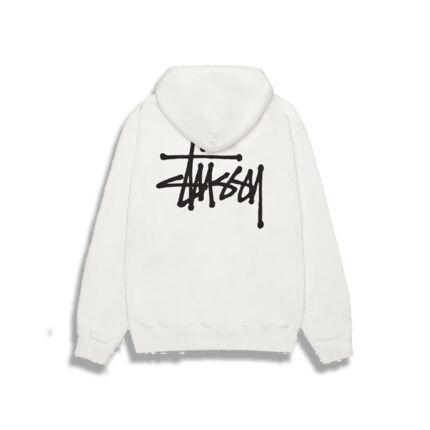Streetwear has grown from a grassroots movement into one of the most influential forces in global fashion, shaping the way people dress, express themselves, and connect with culture. At the heart of this transformation stands Stussy, a pioneering brand that not only defined the aesthetics of streetwear but also built a blueprint for countless labels that followed. From its beginnings in Southern California to becoming a global phenomenon, Stussy’s journey represents the fusion of surf, skate, hip-hop, and high fashion into a cultural movement that transcends clothing.
The Origins of Stussy
The story of Stussy begins in the early 1980s with Shawn Stussy, a surfer and board shaper from Laguna Beach, California. Shawn began scrawling his now-famous signature on surfboards, a style of handwriting that would become the brand’s iconic logo. To promote his surfboards, he printed the same graffiti-like signature on T-shirts, shorts, and caps. What started as promotional merchandise quickly gained popularity, especially among the local surf and skate communities.
Unlike traditional surf brands that leaned heavily on athleticism and beach imagery, Stussy carried a raw, rebellious, and almost underground energy. This authenticity resonated deeply with youth culture, making Stussy one of the earliest brands to bridge surf wear and street style.
The Rise of the Stussy Tribe
As Stussy gained traction, the brand began forming what became known as the Stussy Tribe. This was not just a marketing strategy but a cultural movement. The “tribe” was a loose collective of DJs, skaters, artists, and musicians who represented the brand’s ethos of freedom and creativity.
The Stussy Tribe emphasized community and exclusivity. Early members would receive limited-edition gear, and the brand often distributed clothing through word-of-mouth or in small quantities. This sense of scarcity and insider access laid the groundwork for modern-day “hype culture,” where limited drops and exclusivity define streetwear’s desirability.
Merging Subcultures: Surf, Skate, and Hip-Hop
One of Stussy’s greatest strengths was its ability to merge diverse subcultures into a unified aesthetic. Surfing and skateboarding were the brand’s roots, but during the 1980s and 1990s, Stussy embraced the rising influence of hip-hop and reggae. Shawn Stussy himself was a fan of the emerging hip-hop movement, and the brand began producing clothing inspired by street sounds, graffiti, and nightlife.
In New York and London, Stussy became popular with DJs and club-goers. Its clothing—oversized T-shirts, bucket hats, varsity jackets, and graphic hoodies—fit seamlessly into hip-hop’s style language. By the early 1990s, Stussy was no longer just a surf brand; it had transformed into a global streetwear leader.
Stussy’s Global Expansion
By the mid-1990s, Stussy had flagship stores in cities like New York, Tokyo, and London. Japan, in particular, became one of Stussy’s most loyal markets, where street fashion had already taken root. Japanese youth embraced Stussy’s American West Coast vibe while blending it with their own cultural expressions.
This global expansion marked Stussy’s transition from a niche label into a worldwide powerhouse. Unlike other surf and skate brands that stayed regional, Stussy tapped into a universal desire for cool, effortless clothing that represented individuality and rebellion.
Collaborations and Influence
Another key to Stussy’s cultural dominance has been its collaborations. Long before collaborations became the norm in fashion, Stussy was experimenting with joint projects. The brand worked with artists, musicians, and even high-fashion designers, showing how streetwear could coexist with luxury.
Some of Stussy’s most notable collaborations include partnerships with Nike, Converse, Supreme, BAPE, and Dior. These collaborations not only expanded the brand’s reach but also cemented its role as a bridge between underground culture and mainstream fashion.
Stussy in the 21st Century
Even after Shawn Stussy left the company in 1996, the brand continued to thrive. Under new leadership, Stussy adapted to modern trends while staying true to its roots. It remains highly influential in today’s fashion scene, where streetwear dominates both luxury fashion and everyday style.
In the 2010s and 2020s, Stussy experienced a revival thanks to collaborations with major brands and a renewed interest in 90s-inspired streetwear. Its collections continue to sell out, and its iconic logo remains a staple in wardrobes across generations.
Read More: Business


